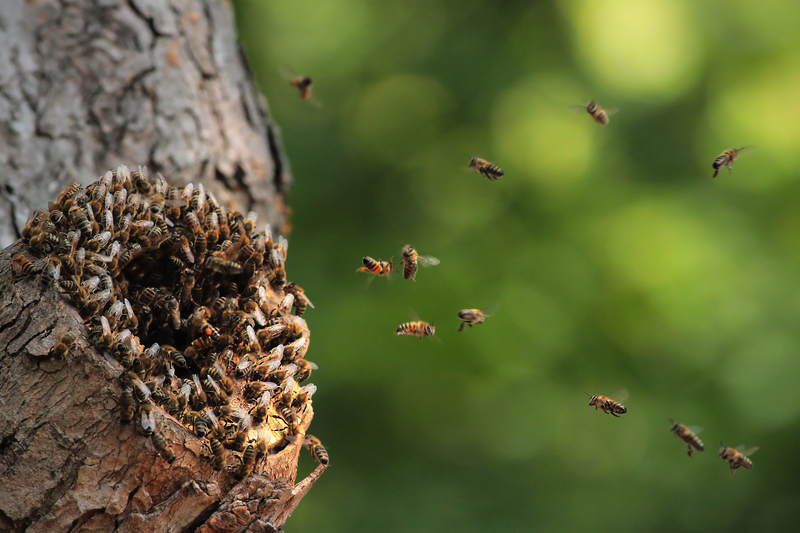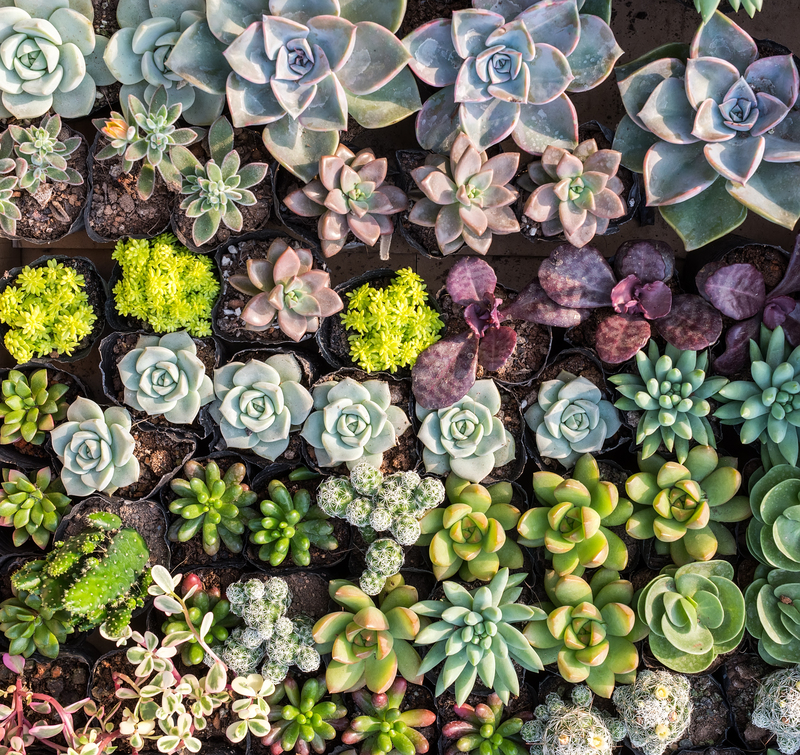How to achieve pet-friendly garden harmony
Posted on 21/06/2025
How to Achieve Pet-Friendly Garden Harmony: A Comprehensive Guide
Creating a garden that is both beautiful and safe for your furry companions is a rewarding challenge. By blending aesthetics, safety, and your pet's unique needs, you can cultivate an outdoor space where all family members--human and animal alike--can thrive. In this guide, we'll discover various strategies and practical tips to establish lasting pet-friendly garden harmony.
Why Strive for Pet-Friendly Garden Harmony?
Achieving pet-friendly garden harmony isn't just about removing hazards. It's about designing an environment where your pets feel safe, entertained, and included, while still maintaining a lush and appealing garden. When a garden is tailored to suit both plant and pet needs, you reduce the risks of toxic exposure, destructive digging, and boredom-driven escapes.
- Safer Spaces: Minimize risks to pet health.
- Lower Maintenance: Prevent pet-induced damage by designing appropriately.
- Happier Pets: Provide enrichment and recreation.
- Beautiful Results: Preserve the aesthetics you love.

Understanding Your Pet's Garden Behavior
Before transforming your outdoor area, take time to observe your pets. Do they love running, lounging, digging, or nibbling? Cats, dogs, rabbits, and other pets each have their specific preferences. By considering their needs, you can help foster true pet garden harmony while preventing future headaches.
Typical Pet Behaviors in Gardens
- Dogs: Marking territory, digging, chewing, or running laps.
- Cats: Stalking, climbing, using garden beds as litter facilities.
- Rabbits or Guinea Pigs: Grazing on greenery, burrowing.
- Birds: Pecking, foraging, dust-bathing.
Step-by-Step: Creating a Harmonious Pet-Friendly Landscape
1. Choose Safe, Non-Toxic Plants
One of the most critical steps towards pet-friendly garden harmony is selecting plants that are non-toxic to your animals. Many common garden plants are attractive but potentially harmful if ingested.
Some safe plant options for dogs and cats:- Spider Plant (Chlorophytum comosum)
- Marigold (Tagetes)
- Camellia
- Sunflower (Helianthus)
- Bamboo
- Snapdragon (Antirrhinum)
Plants to avoid completely:
- Lilies (highly toxic to cats!)
- Azaleas
- Oleander
- Foxglove
- Daffodil
- Yew
- Nightshade family (Tomato leaves, Potato sprout)
Always consult your vet and check the ASPCA's exhaustive list of pet-toxic and safe plants before planting anything new.
2. Avoid Harmful Chemicals and Fertilizers
Pesticides, herbicides, and chemical fertilizers may help control pests and boost plant health, but they can also pose serious threats to pets. Symptoms of exposure can range from mild skin irritation to life-threatening poisoning.
- Choose organic or pet-safe alternatives like neem oil, diatomaceous earth, or homemade garlic sprays.
- Consider natural composts and mulches instead of synthetic fertilizers. Avoid cocoa mulch; its theobromine content is as toxic to dogs as chocolate.
- Install slug and snail traps rather than pellets (which are poisonous to most pets).
3. Establish Designated Pet Zones
Direct pets away from your prized flowerbeds by giving them their very own zones for recreation, rest, or toileting. This helps to achieve pet garden harmony by managing behaviors and reducing conflict.
- Dog runs: Simple gravel, paving, or mulch paths dedicated for running or chasing.
- Digging pit: Fill with sand or loose dirt where dogs or small animals can safely dig.
- Pet toilet area: Use low-maintenance grass or gravel for dogs. For cats, consider an outdoor litter box disguised with planting.
- Shaded shelter: Create cool, hidden spots using shrubs, trellises, or dog houses.
4. Select Pet-Resistant Materials
High-traffic areas should use tough, non-toxic, and easy-to-clean materials to withstand animal activity. For harmonious pet and plant coexistence, avoid sharp or loose stones that could hurt paws and minimize use of bark mulch, which some dogs love to chew.
- Gravel, slate, or flagstone: Low maintenance and gentler on paws than rougher aggregates.
- Artificial turf: Pet-friendly types are soft, non-toxic, and drain well.
- Hardy ground covers: Try creeping thyme or clover instead of delicate lawns.
5. Encourage Enrichment and Exploration
Your goal should be to blend safe design with mental stimulation. A bored pet is more likely to dig, chew, or otherwise disrupt your landscaping. Include features that entice and entertain:
- Sensory paths: Use logs, stepping stones, or differing textures for pets (and humans!) to explore.
- Ponds and water features: Add a small fountain, running stream, or splash pool that's safely accessible and shallow.
- Catios or cat tunnels: Give outdoor cats protected play space to climb, stalk, and lounge.
- Pet-friendly herbs: Plant catnip or valerian for cats, and safe mints for dogs to sniff and graze.
- Toys and structures: Strategically place durable toys or agility tunnels.
Safety Considerations for Sustainable Pet-Friendly Gardens
Secure Boundaries and Escape-Proof Fencing
Garden harmony with pets means keeping your animals secure and the wildlife out. Fencing should be play-proof for energetic dogs, and climb-resistant (think fine mesh and angled tops) for escape-artist cats.
- For dogs: Minimum 1.8m high, with gates that latch securely, buried wire/skirting to prevent digging under.
- For cats: Cat-proof fencing kits or adapt existing fences with rollers or "catios."
- Check for gaps under or around gates and fences regularly.
Pet-Friendly Paths and Walkways
Paths that stay cool in summer and non-slip during winter help keep paws safe. Avoid surfaces like metal decking or dark stone, which can overheat fast. For cats, narrow winding paths with hiding nooks mimic their natural world, increasing pet garden harmony.
Shade and Fresh Water
Hydration and shelter are vital. Ensure there are several shaded areas throughout your garden using trellises, arbors, or dense shrubbery. Regularly refill water stations, and monitor them for cleanliness during hot weather.
Safe Mulch and Composting
- No cocoa mulch: Toxic to dogs (similar to chocolate poisoning).
- Use pine, cedar, or untreated wood chips gently, monitoring for excessive chewing.
- Compost bins: Secure them to prevent pets raiding for food scraps.
Managing Pests and Weeds the Pet-Friendly Way
Natural Pest Control
Introduce beneficial insects (like ladybugs or nematodes) or companion planting to deter pests without relying on chemicals. Encourage birds and frogs to your garden--they'll help keep pests down and support garden harmony.
Pet-Safe Weeding Techniques
- Hand-weed regularly instead of using spray-on weedkillers.
- Try mulch or ground cover to naturally smother weeds (and keep pets clean).
- Boiling water or vinegar (used carefully) can control weeds in pavement cracks.
Enriching Your Garden for Different Types of Pets
Dog-Friendly Gardens
- Zoom pathways: Gravel or hard-packed earth for running laps.
- Robust lawn alternatives: Buffalo grass, fescue blends, or clover resist wear and tear and help maintain harmony.
- Sturdy plants in key areas: Boxwood, rosemary, or ornamental grasses can withstand trampling.
- Dig pit: Train dogs to use a sandpit for digging rather than your veggie patch.
Cat-Friendly Gardens
- Safe sun-bathing spots: Raised beds or boulders for soaking up warmth.
- Climbing opportunities: Logs, posts, or cat trees for climbing and scratching.
- Hiding places: Dense shrubs or garden tunnels serve as excellent hiding or nap spots.
- Protected plants: Cover new seedlings or valued beds with netting until established.
Small Animal and Bird-Friendly Gardens
- Safe fencing or pens: For rabbits, guinea pigs, or chickens, predator-proof enclosures are a must.
- Edible lawns: Fresh grass, dandelion, and clover patches provide grazing.
- Dust or sand baths: For chickens and some pet birds; prevents parasites and promotes natural behavior.
- Keep toxic plants out: Small animals are extra susceptible to plant toxins.
Maintenance Tips for Ongoing Pet Garden Harmony
- Review plantings seasonally: As pets grow, preferences and risk zones may change. Rotate or replace plants accordingly.
- Regularly check fences and gates for gaps or weak points.
- Inspect mulch, compost, and garden furniture for hazards or pet chewing.
- Remove fallen fruit, nuts, or poisonous seeds that could be ingested.
- Clean water bowls and fountains weekly.
- Keep play and enrichment areas tidy and free from sharp or choking hazards.

Bonus: Creating a Garden for Wildlife and Pets
Many pet-friendly garden principles also support a thriving, wildlife-friendly urban ecosystem. Native plants, water sources, and safe shelters will attract butterflies, birds, and pollinators, which add beauty and natural pest control to your harmonious space.
- Bird feeders and baths: Place out of pets' reach, or shield with shrubs to keep pets at bay.
- Bee-friendly and butterfly-friendly plantings: Lavender, salvia, and echinacea stand up to light nibbling and support pollinators.
- Log or rock piles: Create shelter for amphibians and beneficial insects--block off from pet access as needed.
Conclusion: Achieve Lasting Pet Garden Harmony
Balancing beauty and safety in your outdoor space is possible. Through thoughtful planning and ongoing attention, you can build a garden where pets and people thrive together. Embrace non-toxic plants, create safe zones, enrich your environment, and adapt as your pets grow and explore. With a little patience and creativity, your backyard can flourish in a perfect state of pet-friendly garden harmony--a space where tails wag, birds sing, and flowers bloom.
Ready to start your journey toward a harmonious, pet-friendly garden? Put these strategies into practice and enjoy a more welcoming, vibrant outdoor haven for every member of your family.

